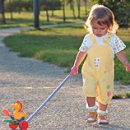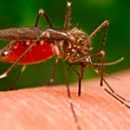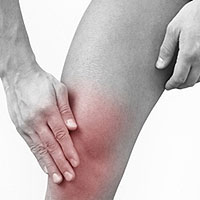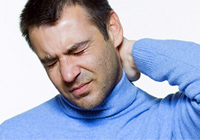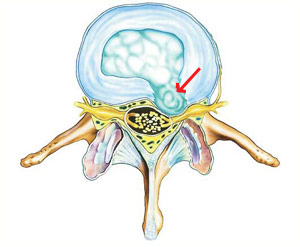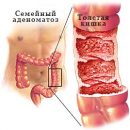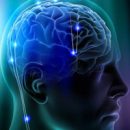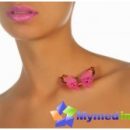Osteochondrosis of the spine - this is a dystrophy (dysfunction) of the tissue of the intervertebral disc with the weakening of its depreciation properties.
Content
the spine, that is, the state of the oil-star muscles and ligaments, especially when
Load. At first, there is dehydration of the pulpal nucleus and a violation of exchange
Substances in Khryashche. As a result, the disk loses its elasticity, dries, decreases in
sizes and can not counteract physical exertion. For example,
Vertical force 500 kg leads to a breaking of a healthy disk, which is confirmed
Experimental. Osteochondrosis for a similar effect is sufficiently axial
Load 200 kg.
Distrophy processes of an intervertebral disk in
The course of the further development of thenechondrosis entails compensatory changes
bodies, joints, ligaments involving into the pathological process of vessels, muscles and
nerves. In effectively treatment, fibrotization (seal) of the disk with its
self-psychication: there are pain, the mobility of the spine and man is returned
Feels healthy.
Neurosurgeon A. AND. Ospens suggested in 1971
classification of osteochondrosis stages based on the long experience of studying and
Surgical treatment.
Stage I - Outdoor nucleus movement occurs
more than normal, which leads to stretching or compressing fibrous
rings.
Stages osteochondrosis
- Stage I - Outdoor nucleus movement occurs
more than normal, which leads to stretching or compressing fibrous
rings.
-
Stage II - cracked fibrous rings and
Unstable of the affected spine segment.
-
III Stage - There is a complete discharge of the disk with losing
hernia, inflammatory process with a possible pressure of nerves and vessels.
- IV Stage - There is a dystrophic lesion of others
components of an intervertebral disc with the addition of spondyleze, spondyloarthrosis
and other compensatory changes.
Types of osteochondrosis
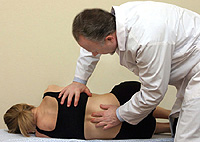 Spondloarthrosis
Spondloarthrosis(arthrosis of the spinal joints) arises from the wrong distribution
Vertical load due to reducing the height of the intervertebral disk. Flared
The disc reduces the distance between the arcoverts. They are overloaded,
Crucified with the development of arthrosis. Osteoarthrosis Result - Publishing of Pubers
spine joints, which blocks the joint and calls pain.
Spondylose -
The disease of the spine, characterized by deformation of the vertebrae due to
Bone expanding on their surfaces in the form of protrusions and spikes. Spondylose
Fixes a plot subjected to overload, causing nervous irritation
End of a bundle. Patients experience stupid, butterbearing and severity in
Spine. Spondlissee is accompanied by muscle tension around the motor
segment, and then these two fixing mechanisms not only aggravate pain,
deteriorate the amortization function of the spine, straightening its physiological
bend. In the early stages of osteochondrosis, muscles are strained, immobilizing and
Protecting the spine, creating local muscular corset. In later stages
immobilization is supported by irreversible changes in the muscles surrounding
Tissues and spondylise.
Muscular syndrome
when osteochondrosis is associated with the fact that from the affected motor segment in
Muscles go pathological irritating impulses that along with their dynamic
overload causes tonic spasm. These nerve impulses cause spasm
vessels, and first there are pain, and then the muscles change themselves as a result
Violations of their blood supply. Appear seals containing dense and
Painful nodules (Cornelus), sites of hypertonus or dense mogelosis.
The so-called trigger zones are formed, pressing which causes a sharp
Common pain.
What happens during osteochondrosis
So, with osteochondrosis, first occurs
weakening the fixing abilities of the intervertebral disk, which
Compensated by muscles and ligaments. If further adverse factors
continue their destructive action, then compensatory capabilities
fixing elements are insufficient. In this case, in the later
the stages of the disease Muscular fixation decreases, ligaments are stretched, and
The excess mobility in the vertebral motion segment is formed. Excessive
Mobility causes more than normal, moving adjacent vertebrae by
relation to each other.
For example, at the time of extension of the body overlay
The vertebra shifts the stop, which does not happen in a healthy spine. Because of
pathological mobility trauming the body of the vertebrae, and roughly pulling
Bundles The closure plates of the bodies of the vertebrae are compacted and developing them
sclerosis. As a result, there is a chronic sprouting of bone tel tissue
vertebrae that compensatory increases their surface and reduces
Load. These bone spikes are called osteophytes. Spondloarthrosis,
Spondylosis, pseudospondylolisthesis and osteophytes indicate later stages
Osteochondrosis.
It should be noted that listed
Above the signs of osteochondrosis can not be clinically manifested and only by chance
Detected on radiographs. These phenomena may result
Natural aging of the spine and not accompanied by unpleasant sensations.
However, another variant of the osteochondrosis flow with intense pains,
who are tormented by patients from young age. Difference between two options
The course of the disease is principled and lies in pathologically early aging
Spine. Determines the clinical manifestations of osteochondrosis what's in this
Case The degree of development of compensatory changes is lagging behind intensity
Natural disk height reduction.

